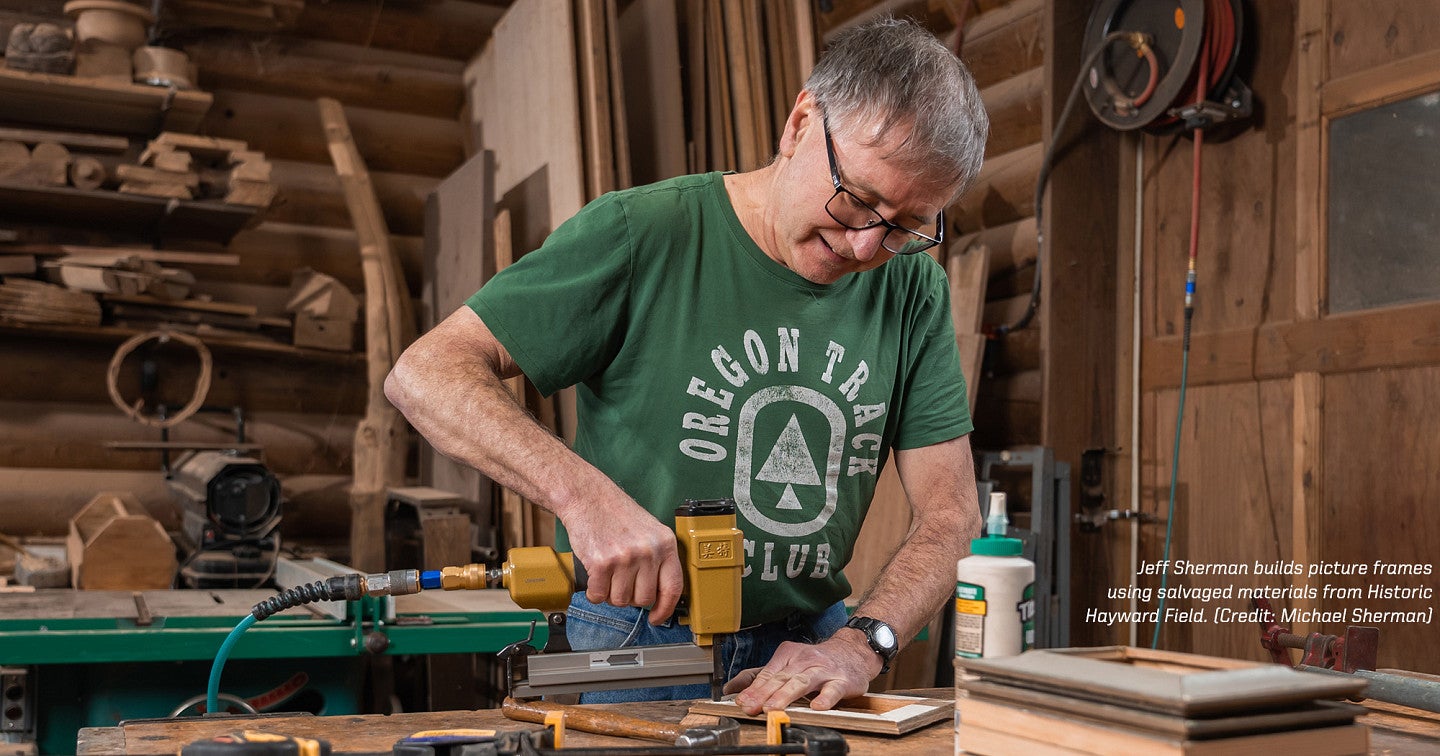
Hayward Field’s original east grandstands may be gone, but like seeds scattered by the wind, it’s not hard to spot remnants of the venerable structure around the Northwest and beyond.
Once it was decided that a new stadium would replace the older structure, University of Oregon administrators and staff looked for ways the materials could be repurposed to celebrate the legacy of Historic Hayward Field. They put out a statewide call to community groups to submit proposals for how they might use pieces of the old stadium.
“The reception and interest were overwhelming,” said Carlyn Schreck, assistant vice president for presidential initiatives. “Our advisory committee had a tough time narrowing it down, but we couldn’t be more pleased with where these materials ended up and how they will carry forth the legacy and magic of Hayward Field.”
While architects and designers salvaged many pieces for use in the re-imagined stadium and in Hayward Hall, where interactive exhibits celebrate the stadium’s history, a significant amount of materials were made available to the community.
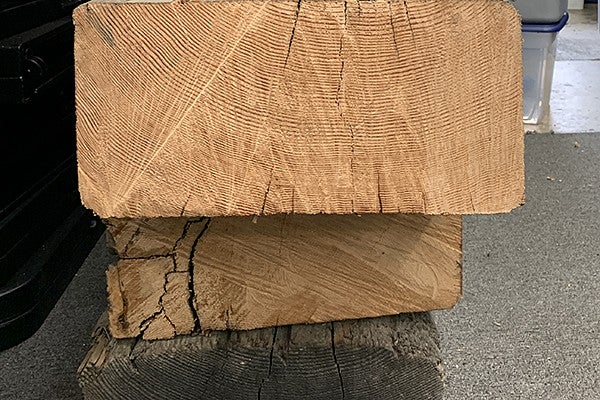
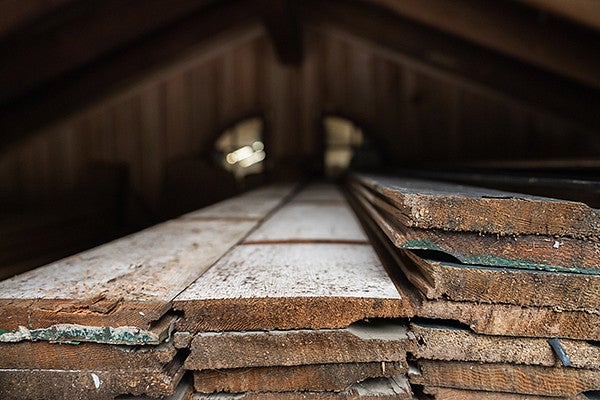
In all, 18 groups were awarded several tons of wood -- bleachers, beams, panels and more -- that otherwise would have gone to waste, and put them to use in myriad creative ways.
When he heard that the historic stadium would be coming down, Jeff Sherman and his son, Michael, thought the wood would be perfect for picture frames. Jeff took it a step further and suggested they build the frames for the Oregon Track Club to sell and support its all-comers meets — a legacy of former UO track and field coach Bill Bowerman that is a foundational component of Eugene’s reputation as Tracktown USA
He received parts of the east grandstand’s track-facing wall and beams.
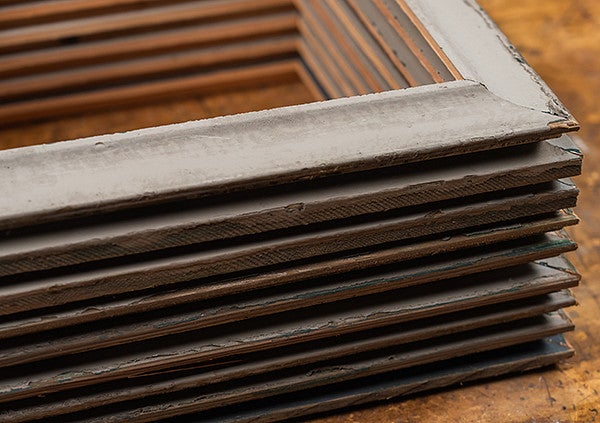
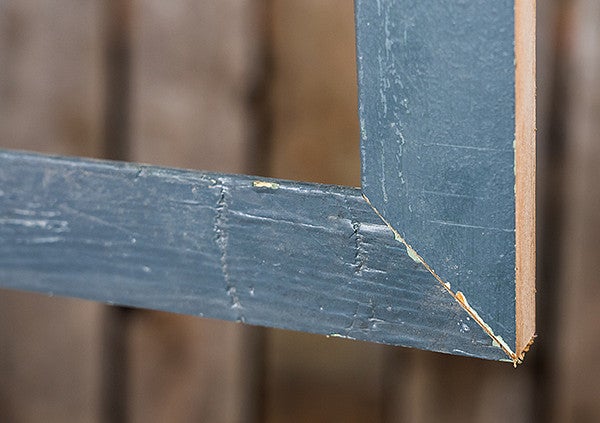
“I tell people when they look at the boards — they are the old stuff — if you put your ear up to the edge, you can hear the cheering and the screaming and the roars of the crowd,” said Sherman, a longtime fan of the sport who taught and coached at McKenzie River High School.
He had the boards milled and kiln-dried locally, then cut them to get the most out of every board — you can spot old nail holes in some pieces.
As they learned about his project, Framin’ Artworks and I-5 Glass gave him a discount on the parts. Now he is working with another local business to have iconic photographs of athletes competing at Hayward Field “printed” onto slabs sliced from the stands’ big timbers.
For Sherman, one of the highlights of the project was talking to people from around the country — including some of the sport’s luminaries — who called to buy a frame.

Bob Arnsdorf is also a fan of the sport, having attended numerous meets and run laps on the hallowed track. But he’s also a birdwatcher, and his idea for the materials was particularly fitting: he made nesting boxes for wood ducks.
“I've built a lot of wood duck boxes over the years,” Arnsdorf said. “So when I saw that they were making some salvage materials available from Hayward Field, I thought, what better way to celebrate the Oregon Ducks than to build houses for Oregon ducks — non-capitalized.”
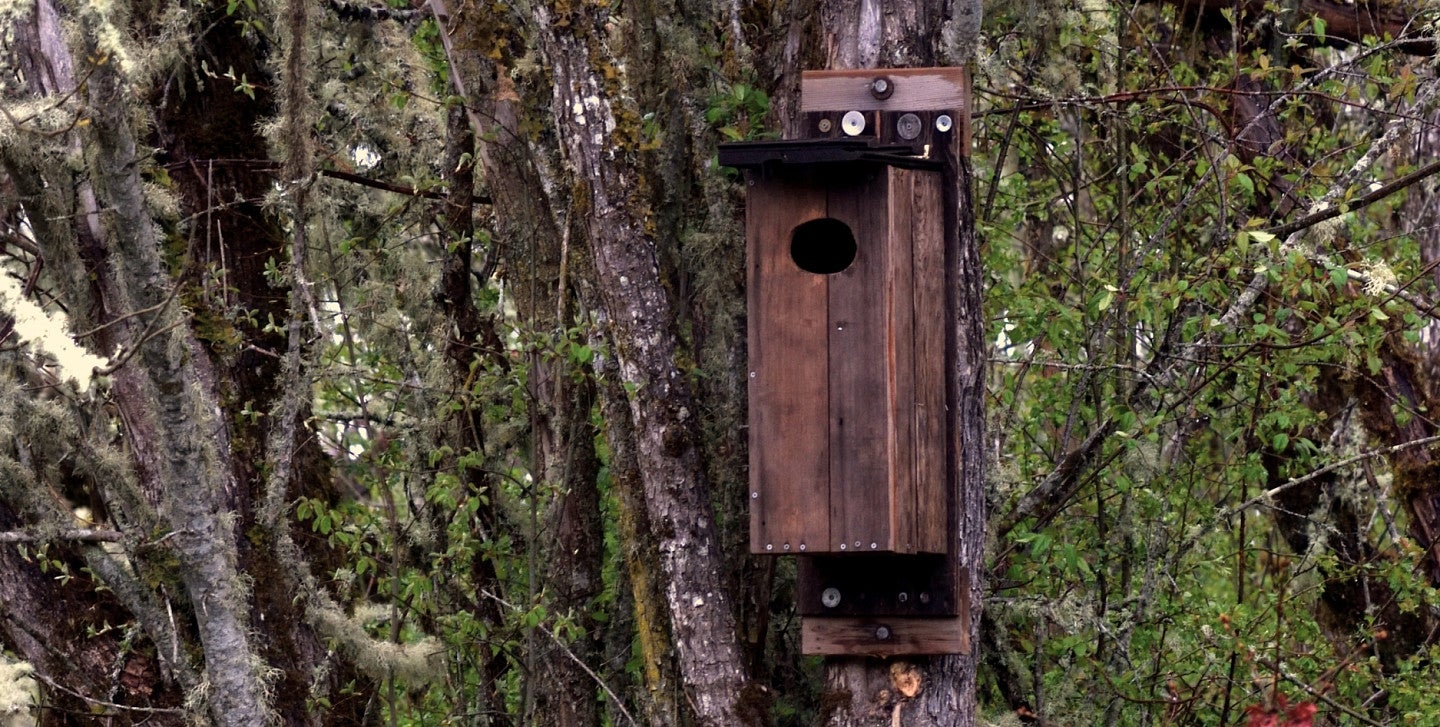
He received some of the iconic tongue-and-groove paneling that fronted the stands — enough for him and friend Cory Nordquist to make three nesting boxes. Then he, along with his daughter Sarah and friend Dr. Bryan Andresen, placed the boxes last spring in an oak woodland southwest of Eugene that Andresen is a volunteer land steward of for the McKenzie River Trust.
So far, ducks have yet to settle in any of the boxes, but once they find them, they are known to return annually.

You might also find pieces of the east grandstands hanging around the necks of thousands of runners and walkers who have completed the Eugene Marathon events the past two years.
In 2021, after being canceled the previous year due to COVID, the marathon had just announced it would pivot from holding an in-person event to a virtual one as the virus continued to spread. Shortly after sharing that news, the small business that puts on the marathon announced its medal for that year’s events: a slice from one of the yellow-edged stair boards.
“When we did our medal reveal for 2021, we had thousands of people from across the world sign up,” said Becky Radliff, Eugene Marathon’s director of event operations. “It was a record day for us.”
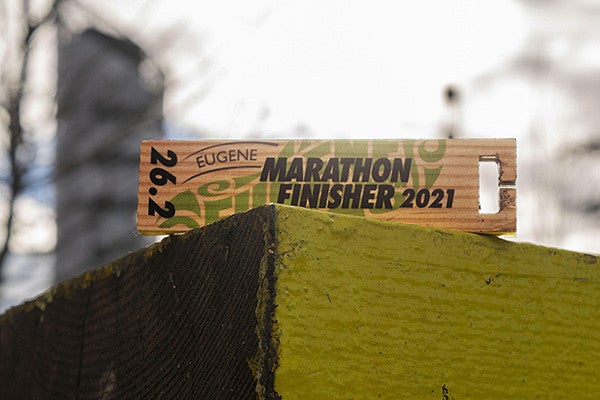
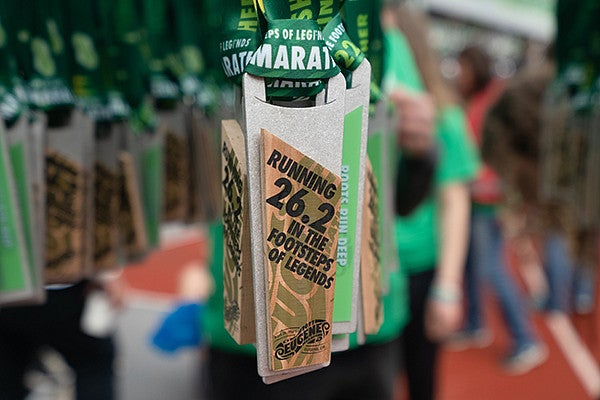
“To be able to have something that was interesting and unique and truly, authentically a connection to the actual in-person event — I think that was a game-changer for us,” said Eugene Marathon Race Director Ian Dobson, adding the surge in registrations allowed the business to keep all its staff on board.

As soon as they heard materials from the East Grandstand were going to be made available, they knew they could put them to good use.
“What we said was we’re going to get Hayward in the hands of as many people as possible,” Dobson said.
They also used Hayward wood in their 2022 medals and have enough material to last at least a few more years, with four tons left of the six tons of material they received -- a few stacks of hefty timbers continue to reside in the office’s storage space.
“I think one of the things we're most proud of is just trying to really be good stewards of the material,” said Dobson, who qualified for the 2008 U.S. Olympic Team at Hayward Field.
“The way we all experience history is different, right?” Dobson asked. “For some people, an object will totally resonate as history. And for me, it kind of does.”
